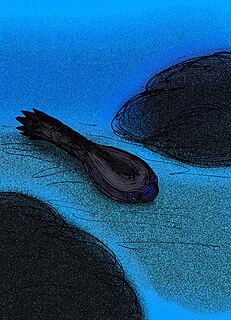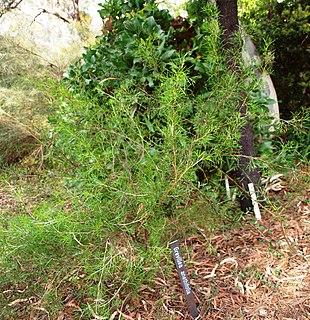
Asparagales is an order of plants in modern classification systems such as the Angiosperm Phylogeny Group (APG) and the Angiosperm Phylogeny Web. The order takes its name from the type family Asparagaceae and is placed in the monocots amongst the lilioid monocots. The order has only recently been recognized in classification systems. It was first put forward by Huber in 1977 and later taken up in the Dahlgren system of 1985 and then the APG in 1998, 2003 and 2009. Before this, many of its families were assigned to the old order Liliales, a very large order containing almost all monocots with colorful tepals and lacking starch in their endosperm. DNA sequence analysis indicated that many of the taxa previously included in Liliales should actually be redistributed over three orders, Liliales, Asparagales, and Dioscoreales. The boundaries of the Asparagales and of its families have undergone a series of changes in recent years; future research may lead to further changes and ultimately greater stability. In the APG circumscription, Asparagales is the largest order of monocots with 14 families, 1,122 genera, and about 36,000 species.

Apiaceae or Umbelliferae is a family of mostly aromatic flowering plants named after the type genus Apium and commonly known as the celery, carrot or parsley family, or simply as umbellifers. It is the 16th-largest family of flowering plants, with more than 3,700 species in 434 genera including such well-known and economically important plants such as ajwain, angelica, anise, asafoetida, caraway, carrot, celery, chervil, coriander, cumin, dill, fennel, lovage, cow parsley, parsley, parsnip and sea holly, as well as silphium, a plant whose identity is unclear and which may be extinct.
In biological classification, a subfamily is an auxiliary (intermediate) taxonomic rank, next below family but more inclusive than genus. Standard nomenclature rules end subfamily botanical names with "-oideae", and zoological names with "-inae".
In probability and statistics, an exponential family is a parametric set of probability distributions of a certain form, specified below. This special form is chosen for mathematical convenience, based on some useful algebraic properties, as well as for generality, as exponential families are in a sense very natural sets of distributions to consider. The term exponential class is sometimes used in place of "exponential family", or the older term Koopman–Darmois family. The terms "distribution" and "family" are often used loosely: properly, an exponential family is a set of distributions, where the specific distribution varies with the parameter; however, a parametric family of distributions is often referred to as "a distribution", and the set of all exponential families is sometimes loosely referred to as "the" exponential family. They are distinct because they possess a variety of desirable properties, most importantly the existence of a sufficient statistic.
In biology, a monotypic taxon is a taxonomic group (taxon) that contains only one immediately subordinate taxon.

Cucujiformia is an infraorder of polyphagan beetles, representing most plant-eating beetles.
The Queensland Family History Society (QFHS) is an incorporated association formed in Brisbane, Queensland, Australia. Their library is located at 58 Bellevue Avenue, Gaythorne.

Joachim-Yehoyachin Stutschewsky, was a Ukraine-born Austrian and Israeli cellist, composer, musicologist.
Anomalomyidae is a family of extinct muroid rodents from Europe.

Pytilia is a genus of birds in the family Estrildidae,
In biological taxonomy, circumscription is the content of a taxon, that is, the delimitation of which subordinate taxa are parts of that taxon. If we determine that species X, Y, and Z belong in Genus A, and species T, U, V, and W belong in Genus B, those are our circumscriptions of those two genera. Another systematist might determine that T, U, V, W, X, Y, and Z all belong in genus A. Agreement on circumscriptions is not governed by the Codes of Zoological or Botanical Nomenclature, and must be reached by scientific consensus.
The World Checklist of Selected Plant Families is an "international collaborative programme that provides the latest peer reviewed and published opinions on the accepted scientific names and synonyms of selected plant families." Maintained by the Royal Botanic Gardens, Kew, it is available online, allowing searches for the names of families, genera and species, as well as the ability to create checklists.

Cyathaspidiformes is an extinct order of heterostracan vertebrates known from extensive fossil remains primarily from Silurian to Early Devonian strata of Europe, and North America, and from Early Devonian marine strata of Siberia.

Cyathaspidida is a taxon of extinct cyathaspidiform heterostracan agnathans whose fossils are found in Silurian to Lower Devonian marine strata of Europe and North America. In life, they are thought to be benthic animals that lived most of their lives either mostly buried in or resting directly on top of the substrate.

Grevillea depauperata is a shrub of the family Proteaceae that is endemic to the southwest of Western Australia.
Grevillea fasciculata is a shrub of the family Proteaceae that is endemic to the southwest of Western Australia.

Grevillea mimosoides is a shrub or small tree of the family Proteaceae that is endemic to North and Central Australia.

Grevillea anethifolia is a shrub of the family Proteaceae that is endemic to Western Australia.
Grevillea cunninghamii is a shrub of the family Proteaceae that is endemic to the Kimberley region of Western Australia.

Ariaspidae is a family of extinct cyathaspidiform heterostracan agnathans in the suborder Cyathaspidida.










